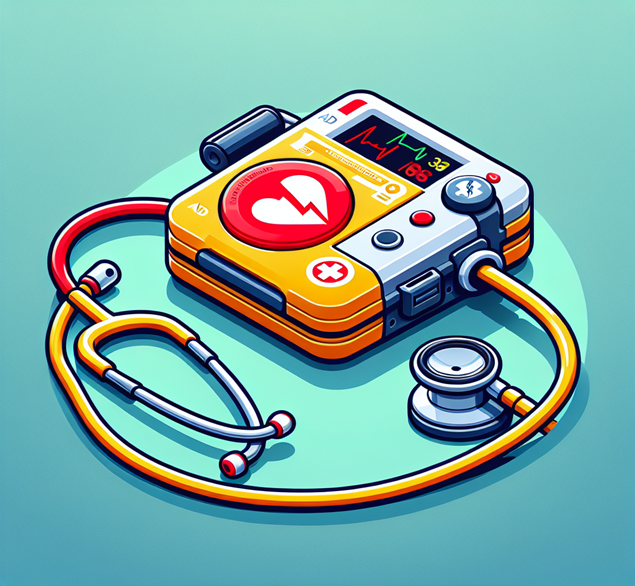Don’t Learn CPR Online: On-Site CPR Training is a Better Alternative
Cardiopulmonary resuscitation (CPR) is an essential, life-saving procedure. When executed correctly, it can mean the difference between life and death for anyone experiencing a cardiac arrest. In recent years, online CPR programs have gained popularity due to their convenience and accessibility.
However, when assessing the true value and effectiveness of the training, you need to take an onsite program to experience the best results. The educators at In-Pulse CPR can get you on track, so you can feel more confident in an emergency that involves a sudden cardiac arrest (SCA)
The Importance of Hands-On Learning
Real-World Experience
One of the most significant drawbacks of an online CPR program is the lack of hands-on experience. CPR is a physically demanding skill that requires precise timing, force, and technique. These skills cannot be effectively learned through watching videos or reading instructional material.
On-site training, on the other hand, provides students with the opportunity to practice on mannequins under the supervision of experienced In-Pulse instructors.
This hands-on practice gives you the skills and confidence required to perform CPR effectively in a real-life emergency. You learn by doing, so taking an In-Pulse onsite course can mean the difference between optimally using what you learned or being disappointed at the results.
Immediate Feedback
On-site training allows for immediate feedback from experienced instructors. When you practice CPR on a mannequin, an instructor can provide instant corrections, helping you understand what you’re doing right and what needs improvement.
This interactive feedback loop is essential for mastering the technique. Online programs lack this level of personalized guidance, leaving learners unsure if they’re performing the procedures correctly.
Enhanced Retention and Confidence
Engaging Learning Environment
On-site CPR training programs tend to be more engaging than their online counterparts. The in-person environment fosters a sense of community and accountability that can enhance learning and retention.
Participants are more likely to stay focused and remember information when they are physically present and actively involve themselves in the training. The immersive nature of on-site training also allows for a deeper understanding of the material, leading to a better application of CPR skills.

Building Lifesaving Confidence
Confidence is necessary when it comes to performing CPR. In a high-stress emergency situation, any type of hesitation can have serious consequences.
On-site training helps build confidence by allowing participants to practice repeatedly in a controlled environment.
Under the guidance of skilled In-Pulse instructors, learners will become more self-assured in their abilities. Online programs, with their lack of practical application, often fail to instill this type of inspiration.
Tailored Instruction and Peer Interaction
Personalized Learning
One of the key benefits of on-site CPR training is the ability to receive personalized instruction. Instructors can adapt their teaching methods to suit the learning needs of individual participants.
Whether someone is struggling with a certain aspect of CPR or needs additional practice, an on-site instructor can provide the necessary support and guidance. This personalized approach is often missing in online programs, which generally offer a one-size-fits-all solution.
Peer Learning and Collaboration
On-site training also facilitates peer learning and collaboration. Participants can learn from each other’s questions, mistakes, and successes. This collaborative environment can be incredibly valuable, as it allows learners to gain different perspectives and insights.
The social aspect of on-site training can also make the learning experience more enjoyable and memorable, further enhancing this type of learning experience.
Adherence to Guidelines and Regulations
Compliance with Standards
On-site CPR training programs are more likely to adhere to the latest guidelines and regulations set by health organizations such as the American Heart Association (AHA) and the Red Cross. These programs are often led by certified instructors who are well-versed in current best practices. This ensures that participants receive up-to-date and accurate training.
Quality Assurance
With on-site training, there is an added layer of quality assurance. Reputable training centers have stringent standards they follow to ensure the quality and effectiveness of their programs. Regular assessments and updates ensure that the training provided meets the highest standards in training this life-saving method and skill. Conversely, the quality of online programs can vary significantly, making it difficult to verify their adherence to recognized and specific guidelines
Real-World Preparedness
Simulated Emergency Scenarios
One of the unique benefits of on-site CPR training is the ability to participate in simulated emergency scenarios. These realistic simulations help prepare participants for actual emergencies by mimicking the high-pressure environment and unpredictability of real-life situations.
Practicing CPR in this context helps learners develop the presence of mind and quick decision-making skills required to perform effectively in an emergency.
Familiarity with AEDs
Automated External Defibrillators (AEDs) are often a critical component of administering CPR. On-site training typically includes hands-on practice with AEDs, allowing participants to become familiar with their operation and use.
Understanding how to use an AED correctly can significantly increase the chances of survival for a cardiac arrest victim. Online programs rarely provide this level of practical experience with AEDs, which leaves a critical void in the training.
Conclusion
While online CPR programs offer convenience and flexibility, they fall short in several critical areas when compared to on-site training. The lack of hands-on practice, immediate feedback, personalized instruction, and real-world preparedness are significant drawbacks that make online CPR training a poor investment with respect to both money and time..
On-site training, with its emphasis on practical application, interactive feedback, and compliance with established guidelines, provides a more comprehensive and effective learning experience. By choosing on-site CPR training, learners are truly prepared to act swiftly and confidently in life-saving situations.
Investing in on-site CPR training is not just a wise financial decision; it’s a commitment to the safety and well-being of co-workers and the people in your community.

Inquire about an Onsite CPR class today



